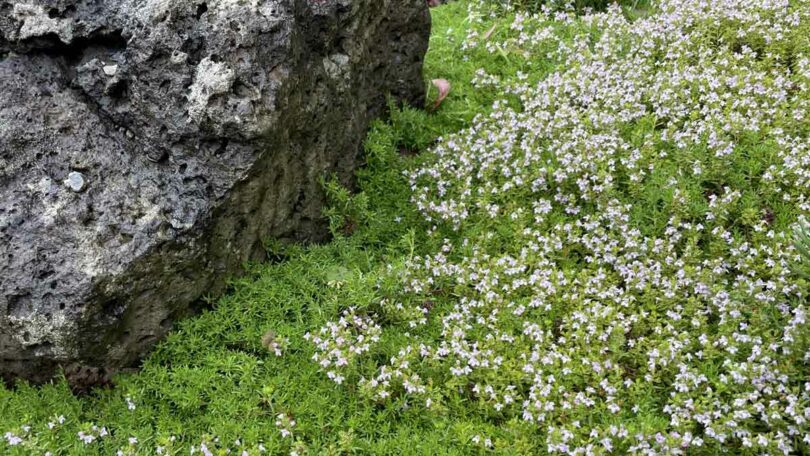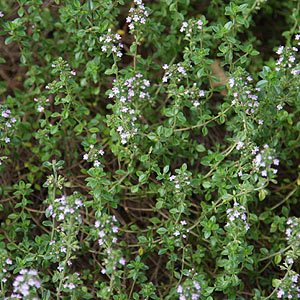
Types of Thyme for the garden and kitchen
Thyme varieties can be used in the garden as ornamental ground cover plants or as culinary herbs.
With over 80 species and many named cultivars Thyme plants differ in height, fragrance and flower colour.

Most varieties are easy to grow either in the ground or in containers or pots
These are plants that like warm dry conditions. So this valuable kitchen herb band garden plant grows well in the Mediterranean climate zones.
Thymus vulgaris is the most widely grown variety for culinary use while the creeping varieties including T. serpyllum coccineus are widely used in rock gardens and as ground cover plants. Thymus mastichina is grown for the essential oils, it is also known as Spanish marjoram and oil extracted is called ‘oil of majoram’.
Basic Care
Many varieties grow well in containers and some also suited to garden borders and rockeries. The amount of sun, and the soil moisture requirement do differ, in general they require they following conditions.
- Full sun.
- A well drained soil.
- Regular pruning of some varieties to prevent to much woody growth.
- A little fertiliser each year.
- Some water during long dry periods.
Growing Tips
A well drained soil is essential for growing thyme some varieties require better drainage than others. This is a plant that grows well in pots, and we recommend terracotta pots as they do drain well. You can also grow some varieties in the rock garden others are suited to growing between pavers.
Plants are best watered in using a liquid seaweed fertilizer. They require little extra after this. A rock mulch is often used to create a good look around plants.
For drying, Thyme is best harvested just before it begins to flower. This is when the plants have a high level of oil and therefore flavour.
It can easily be dried by hanging it in the shade. If you wish to use it fresh, pick at any time of the year.
Thyme Varieties and Common Names
- Thymus vulgaris – Common garden thyme.
- Thymus vulgaris ‘Argenteus’ – Silver Thyme
- ‘Jekkas Thyme’ – Named after Jekka McVicar, early flowering and great tasting.
- Thymus citriodorus – Lemon scented variety.
- Thymus serpyllum coccineus -Red creeping variety
- T. serpyllum Albus – White creeping thyme
- Thymus cilicicus – Sicily Thyme
- Thymus neiceffii
- Herba barona – Carroway scented
- Thymus integer
- Thymus longicualis
- Thymus serpyllum – Wild Thyme or Creeping Thyme
- Thymus praecox ‘Doone Valley’
- T. praecox ‘Elfin’ – One of the smallest and lowest growing types.
- Thymus nummuralis – Pizza Thyme.
Pruning and propagation
Although all species will come back well each year for harvesting, they still respond to pruning. After flowering is a good time for a light prune, and again in late summer. It is essential not to cut back into old wood as most species of these valuable garden plants do not respond well.
After a few years this is a plant that tends to become a little woody, say after 3 – 4 years. It does however spread slowly and will send down roots, so dig up, divide and replant cuttings from the younger growth.
As for growing most species in the shade, they will grow, but it will be thin and leggy and not produce much in the way of foliage, so lots of sun.
You can find Thyme plants for sale online from the following growers
52 Rodd St Canowindra NSW 2804
An online nursery specialising in drought and frost tolerant perennials and fragrant, edible and herbs.
www.perennialle.com.au
OTWAY HERBS (03) 5237 6318.
155 Biddles Rd, Apollo Bay VIC 3233
Large range of Thyme plants.

